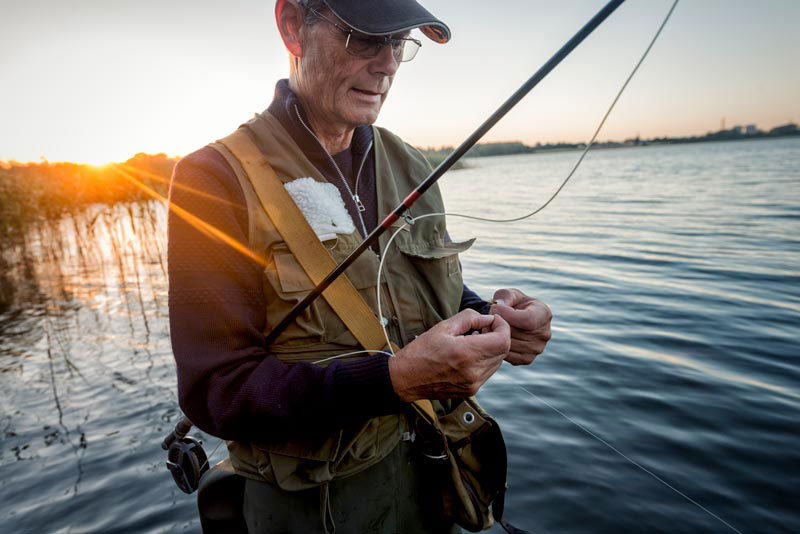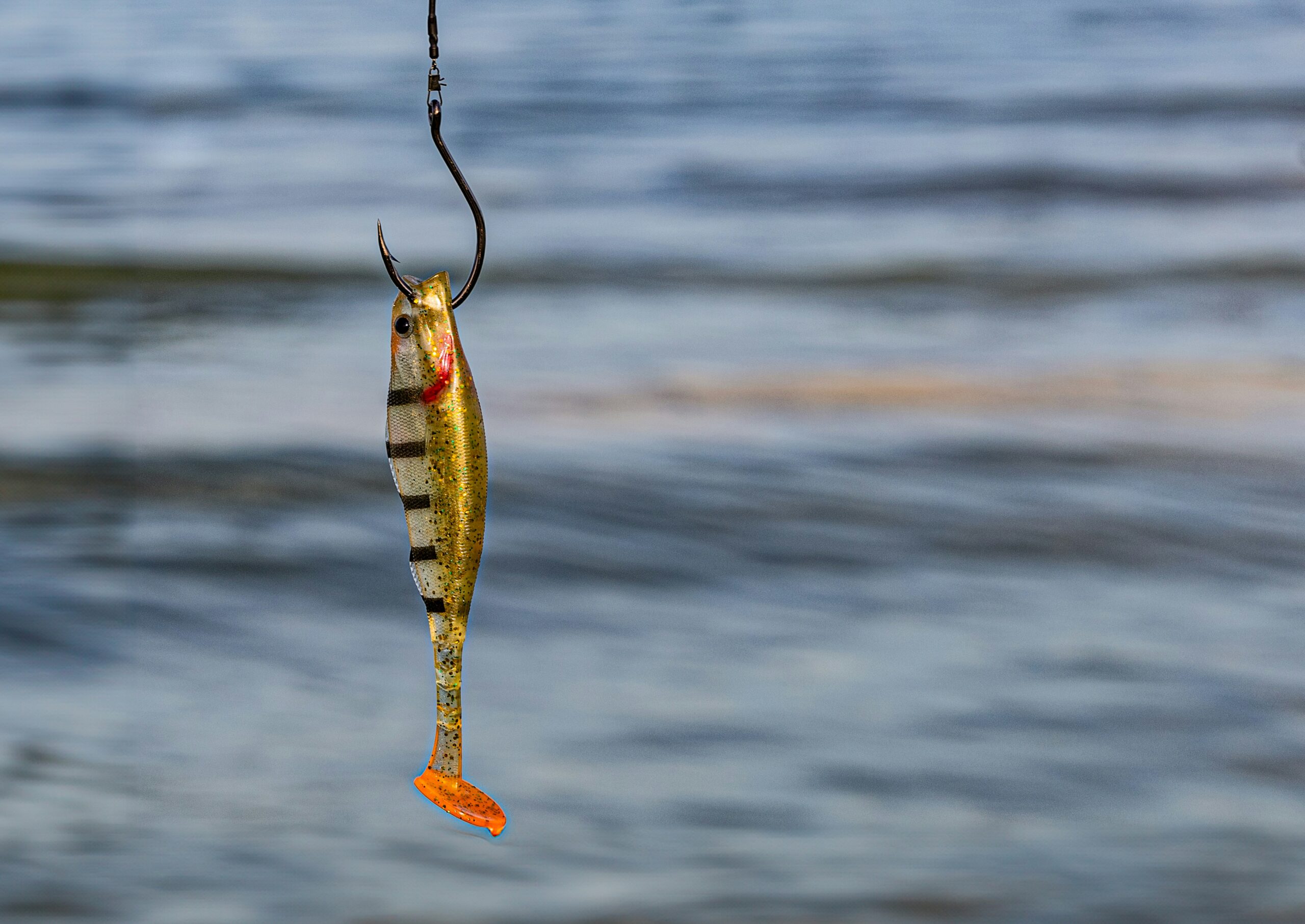What Size Test Line for Bass Fishing? Expert Guide to Choosing the Perfect Line Strength
When I first started bass fishing I quickly realized that choosing the right test line size could make or break my day on the water. It’s easy to get overwhelmed by all the options at the tackle shop but picking the right line isn’t just about strength—it’s about matching your gear and fishing style to the conditions.
I’ve learned that even a small change in line size can mean the difference between landing a trophy bass and telling a story about the one that got away. Whether you’re casting in clear lakes or thick cover knowing what size test line to use gives you a real edge. Let me break down what I’ve found works best so you can spend less time guessing and more time catching.
Understanding Test Line Strength

Test line strength refers to the maximum weight a fishing line can hold before breaking. Manufacturers indicate this with a number in pounds (lb) on the line packaging. For example, a 10 lb test line supports up to 10 pounds of pulling force under optimal conditions. Bass anglers choose specific line strengths to match lure weight, fishing tactics, and the size of targeted bass.
Test Line Strength Chart
I use the following test line strengths based on the type of bass fishing and expected conditions:
| Bass Fishing Condition | Test Line Strength (lb) | Example Use Case |
|---|---|---|
| Light tackle, clear water | 6–8 | Finesse fishing, drop shot |
| General freshwater, mixed | 10–12 | Spinnerbaits, crankbaits |
| Heavy cover, thick weeds | 15–20 | Flipping, pitching, frogs |
| Trophy bass, heavy structure | 20–25 | Swimbaits, jigs near timber |
Factors That Affect Line Strength Selection
- Lure weight: I match line strength to the lure so that casting and presentation remain balanced.
- Water clarity: I use thinner, lighter lines in clear water to avoid spooking bass.
- Cover type: I select stronger lines for fishing near rocks, weeds, or timber where abrasion risk increases.
- Target bass size: I scale up line strength if I expect to hook fish over 5 pounds.
Factors That Influence Test Line Choice
Several key factors directly affect my selection of test line size for bass fishing. I base my choice on bass species, water environment, and how my gear matches the fishing situation.
Bass Size and Species
Bass size and species shape my line selection. Larger bass, like those exceeding 5 pounds in lakes, put more strain on the line compared to smaller river bass. Largemouth bass often inhabit heavy cover, requiring stronger lines, while spotted bass or smallmouth bass in open water allow for lighter line use.
| Bass Species | Typical Size Range (lbs) | Preferred Test Line (lb) |
|---|---|---|
| Largemouth Bass | 2–12 | 10–20 |
| Smallmouth Bass | 1–6 | 6–12 |
| Spotted Bass | 1–5 | 6–12 |
Water Conditions and Cover
Water clarity and cover density impact my test line decisions. Clear water leads me to thinner, less visible lines, while murky water allows for heavier line choices. Thick vegetation, stumps, or rocks require greater abrasion resistance, often in the range of 15–20 lb test fluorocarbon or braid. Sparse cover environments let me drop line strength and potentially increase bait action.
Test Line Guide by Water Clarity and Cover:
| Water Clarity | Cover Type | Test Line Size (lb) |
|---|---|---|
| Clear | Sparse | 6–10 |
| Clear | Heavy | 12–17 |
| Stained/Murky | Sparse | 8–14 |
| Stained/Murky | Heavy | 15–25 |
Rod and Reel Setup
Rod and reel compatibility is crucial when pairing with test line. Spinning reels manage line between 6–10 lb for finesse techniques targeting lighter bass, while baitcasting setups hold 12–25 lb line, aligning with heavy lures or dense cover. I match rod power to the intended line, using medium-light rods for thinner lines and heavy-action rods for stronger lines.
Gear-to-Line Compatibility Table
| Reel Type | Rod Power | Suitable Test Line (lb) |
|---|---|---|
| Spinning | Medium-Light/Med | 6–12 |
| Baitcasting | Medium-Heavy/Heavy | 12–25 |
Recommended Test Line Sizes for Bass Fishing

Bass fishing line size impacts lure action and catch rates more than most other tackle choices. Proper test line pairing lets me adapt to water, structure, and technique for both quantity and trophy bass.
Monofilament vs. Fluorocarbon vs. Braid
Different fishing line types hold unique advantages during bass fishing.
- Monofilament floats and stretches, which helps with topwater lures and crankbaits, especially around moderate cover.
- Fluorocarbon sinks slightly, remains nearly invisible underwater, and resists abrasion. I use it for finesse tactics in clear water or when fishing plastic worms.
- Braid offers low stretch and high strength with small diameters, cutting through heavy weeds and pads. It’s my go-to for flipping, frogging, and heavy cover.
| Line Type | Visibility | Abrasion Resistance | Stretch | Common Test Range (lb) |
|---|---|---|---|---|
| Monofilament | Medium | Medium | High | 8-17 |
| Fluorocarbon | Low | High | Low | 8-20 |
| Braid | High | Very High | Very Low | 20-65 |
Line Weight Suggestions for Different Techniques
Line test recommendations depend on technique, targeted bass size, and cover density.
| Technique | Typical Test (lb) | Suitable Line Type | Example Scenario |
|---|---|---|---|
| Drop Shot/Finesse | 6-8 | Fluorocarbon/Mono | Spotted bass in clear lakes |
| Crankbait/Topwater | 10-14 | Monofilament | Covering shallow or open water |
| Texas/Carolina Rig | 12-20 | Fluorocarbon | Weedlines and rocks |
| Spinnerbait/Chatterbait | 12-17 | Monofilament/Fluoro | Mixed cover |
| Flipping/Frogging | 40-65 | Braid | Thick pads, heavy timber |
Tips for Selecting the Right Test Line
I make efficient test line choices by reviewing these critical variables:
1. Match Test Strength to Bass Size and Habitat
I select higher pound-test lines for heavy cover or large bass. In open water or targeting smaller bass, I use lighter line to improve lure action.
| Bass Size | Habitat | Line Type | Recommended Pound-Test |
|---|---|---|---|
| Under 2 lbs | Open water | Monofilament | 6–8 |
| 2–5 lbs | Light cover | Fluorocarbon | 8–12 |
| Over 5 lbs | Heavy cover | Braid | 14–20+ |
2. Consider Water Clarity
I choose thinner or fluorocarbon lines in clear water to minimize line visibility. For stained or muddy water, I don’t prioritize subtlety and often use stronger, more visible lines.
3. Align Line Diameter With Lure Type
I maintain correct lure presentation by pairing lure weight to line strength. Light finesse lures work better on 6–8 lb lines, while heavier jigs or swimbaits perform best on 14–20 lb test.
4. Check Gear Compatibility
I prevent equipment strain by confirming the rod’s line rating matches the pound-test I use. Spinning reels handle 6–12 lb lines best; baitcasters manage 10–20 lb or heavier.
| Gear Setup | Suitable Test Line (lb) |
|---|---|
| Light spinning | 6–8 |
| Medium spinning | 8–12 |
| Baitcasting combo | 10–20+ |
5. Observe Test Line Condition
I replace my mainline frequently if abrasions, knots, or fraying appear. Weakened line risks losing both lure and catch.
6. Consult Manufacturer Specifications
I consult brand charts for abrasion resistance, stretch, and knot strength ratings, recognizing these vary by manufacturer even at similar pound-tests.
Line Type Selection Table
| Feature | Monofilament | Fluorocarbon | Braid |
|---|---|---|---|
| Stretch | High | Low | Very low |
| Abrasion Resistance | Moderate | High | Very high |
| Visibility in Water | Low (clear types) | Very low | High |
| Best For | Topwater, crankbaits | Finesse, clear water | Heavy cover, weeds |
Conclusion
Choosing the right test line size for bass fishing isn’t just about numbers on a package—it’s about understanding how every detail impacts your day on the water. I’ve learned that paying attention to line strength, type, and how they match your gear can make all the difference between landing a lunker or telling stories about the one that got away.
With the right test line dialed in for your conditions and style, you’ll fish with more confidence and see better results. Trust your instincts, use the guides and charts as tools, and don’t be afraid to experiment until you find what works best for you.
Frequently Asked Questions
What does “test line size” mean in bass fishing?
Test line size refers to the maximum weight a fishing line can hold before breaking, usually listed in pounds on the packaging. Choosing the right test line size helps anglers land bass successfully without the line snapping under pressure.
How does test line strength affect my bass fishing success?
Using the correct test line strength ensures your line matches the size of the bass and the specific fishing conditions. Too light a line can break easily, while too heavy a line may reduce lure action and spook fish, thus impacting your catch rate.
What line strength is best for bass fishing?
For most bass fishing, 8-12 lb test is suitable for clear water and open areas, 14-20 lb for moderate cover, and 30+ lb braid for heavy vegetation or big bass. Always match line strength to your fishing technique and target size.
How do water conditions influence test line selection?
In clear water, use thinner or lower test lines for less visibility. In murky water or heavy cover, heavier or braided lines are better for abrasion resistance and pulling power. Adjust line size based on clarity and surrounding structure.
Which type of fishing line is best for bass?
Monofilament is great for topwater lures, fluorocarbon excels with finesse techniques in clear water, and braided lines are preferred for heavy cover due to their strength. The right choice depends on your desired fishing technique and conditions.
Does line diameter matter for bass fishing?
Yes, line diameter affects lure action and visibility. Thinner lines offer more natural lure movement and less visibility, which is important in clear water or for finicky fish.
How do I match the test line to my rod and reel?
Check your gear’s recommended line ratings, usually listed on the rod. Use lines within those limits to ensure optimal performance and prevent equipment damage.
Can I use the same test line for all bass species?
While some overlap exists, larger species like largemouth may need stronger lines compared to smaller species. Always tailor your line choice to the size and habitat of your target bass.
How often should I change my fishing line?
Replace your fishing line at least once per season, or sooner if you notice nicks, fraying, or memory coils. Damaged line can reduce your chances of landing bass.
Are manufacturer recommendations important when picking a test line?
Yes, always check manufacturer details for both line strength and abrasion resistance, as real-world performance can vary between brands and types even with similar pound ratings.
